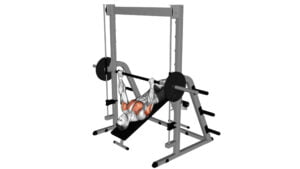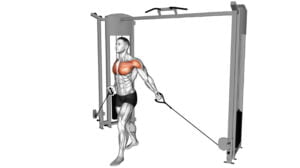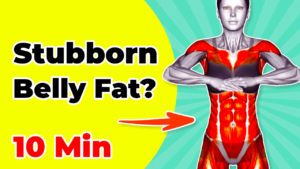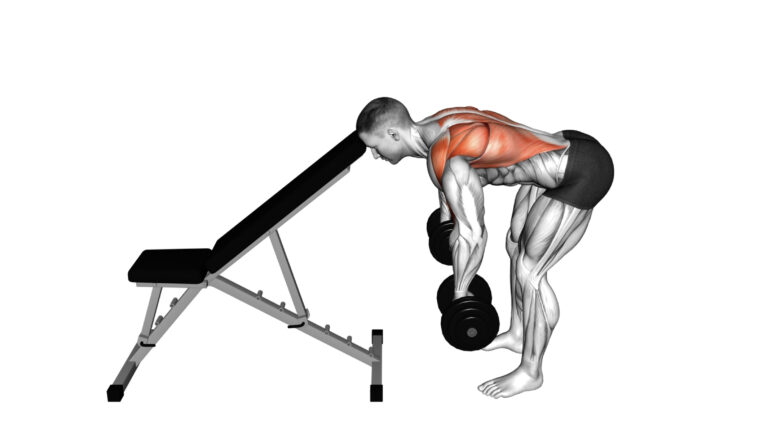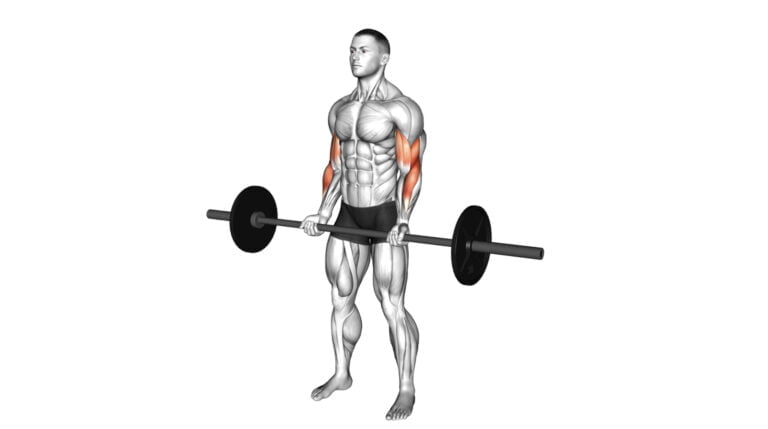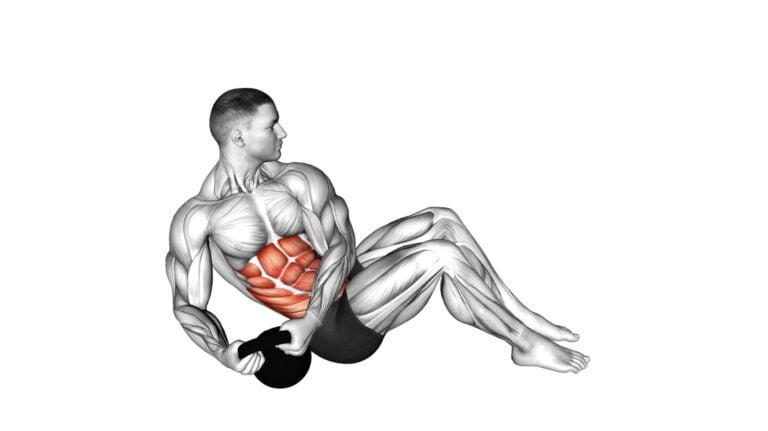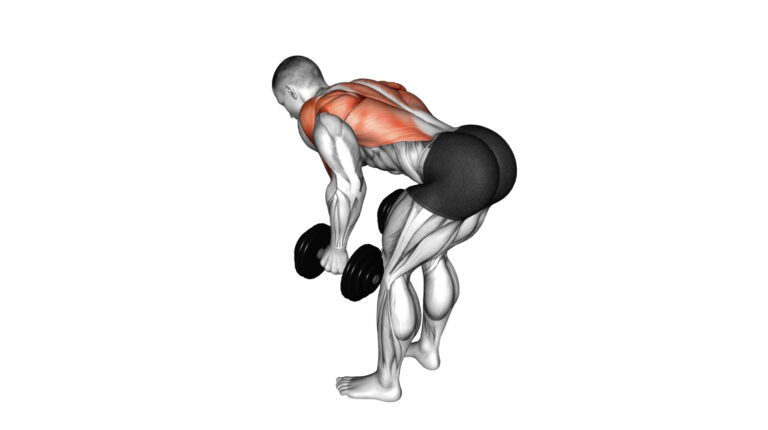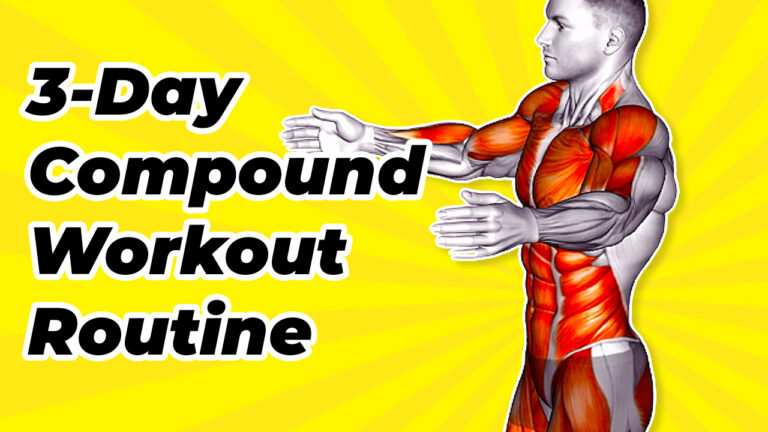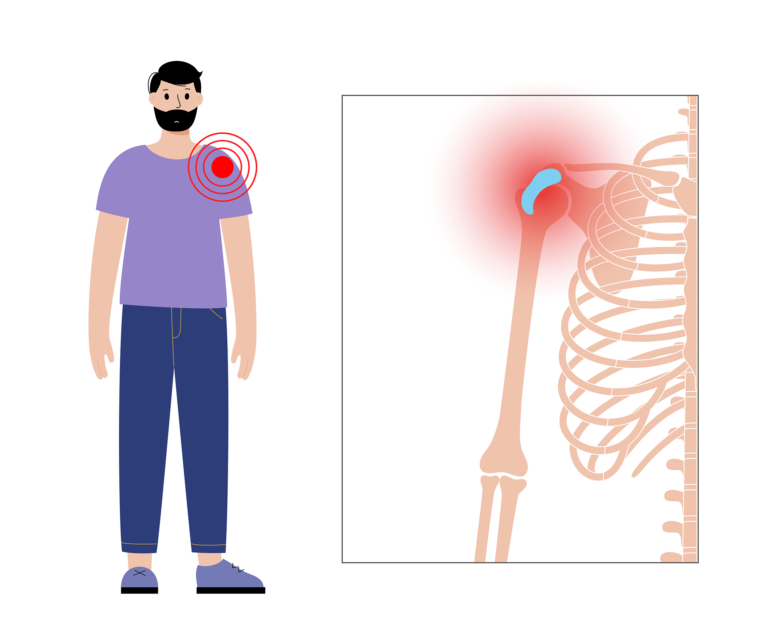10 Effective Chest Warm Up Exercises To Prepare For Your Workout
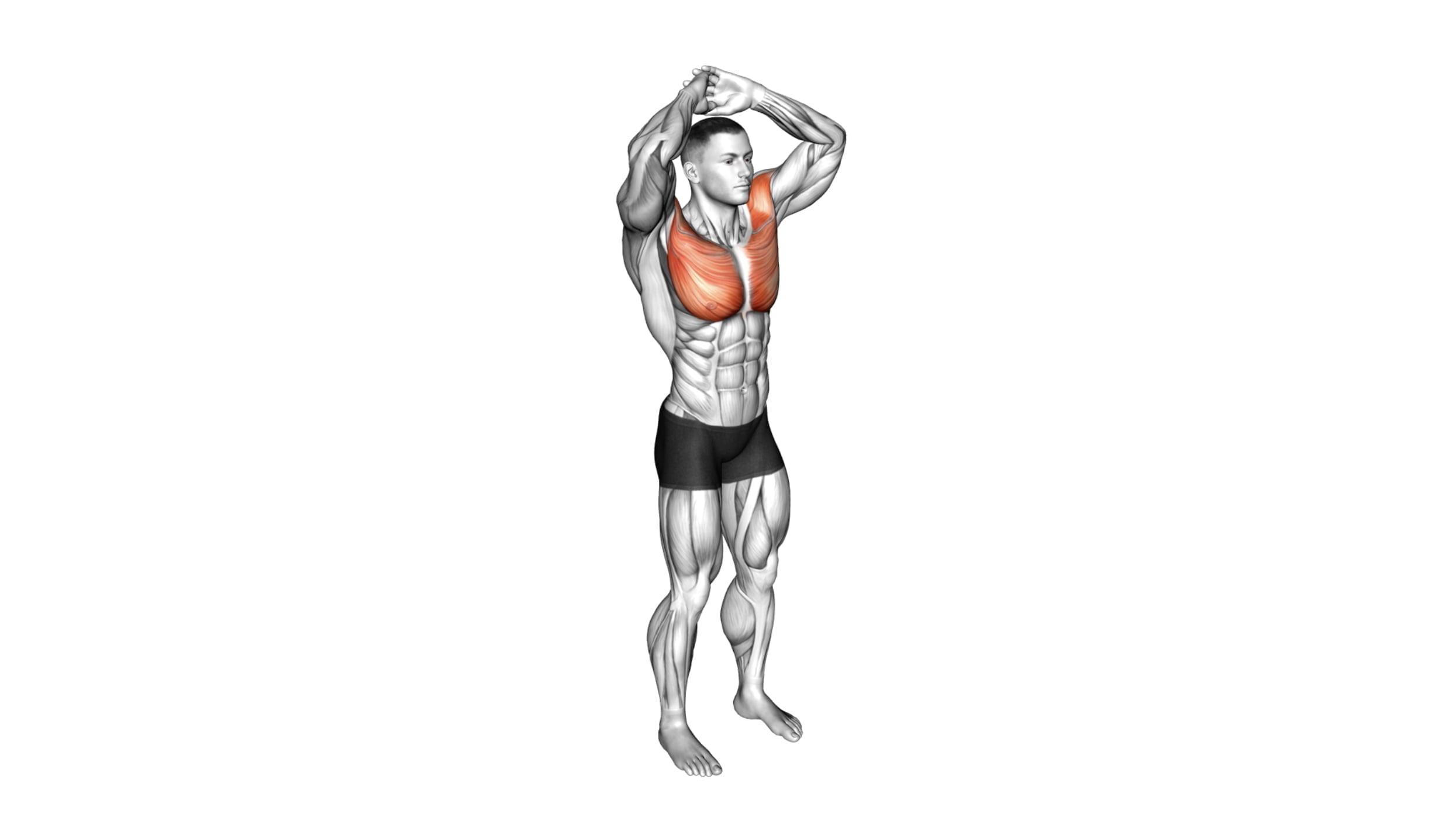
Starting your chest workout with cold muscles is like revving a car engine without warming it up first – you’re setting yourself up for potential strain and less-than-optimal performance.
As someone who’s spent years coaching athletes and fitness enthusiasts, I’ve witnessed firsthand how incorporating chest warm up exercises can drastically reduce the risk of injury and improve overall exercise effectiveness.
Warming up primes the body for the rigorous demands of weightlifting or resistance training, specifically targeting flexibility in areas like the shoulders, elbows, scapula, and pectoral muscles.
A study published by The Journal of Strength & Conditioning Research found that dynamic stretching during a warm-up can significantly enhance power and agility—two critical components when aiming to maximize your bench press or fly strength.

Keep reading to uncover my top 10 chest activation techniques that will prepare your upper body for peak performance. Let’s pump up those pecs!
Key Takeaways
- Warm up your chest muscles before a workout to increase blood flow, improve flexibility, and reduce the risk of injury.
- Engage in 10-15 repetitions of dynamic chest exercises like chest pressdowns, arm crossovers, and standing straight-arm flies for effective muscle activation.
- Maintain proper form and technique during warm-ups to maximize benefits and prevent strain; keep your back straight, shoulders relaxed, and movements controlled.
- Incorporate both active stretches—like bodyweight flys and presses—and passive stretches—such as arm crossovers—to prepare for intense movements during your workout.
- Allow short rest periods between sets of warm-up exercises to avoid muscle fatigue while keeping the muscles engaged and ready for action.
Importance of Warming Up Before a Chest Workout
Warming up before a chest workout is crucial for preparing your muscles for exercise, reducing the risk of injury, and improving overall performance. Performing proper warm up exercises can help activate the chest muscles and ensure they are ready for your workout.
Prepares muscles for exercise
Warming up your chest muscles is like prepping your car for a long drive; it’s essential to make sure everything runs smoothly. Dynamic movements energize the pectoralis major, priming it for strenuous activities like bench presses or push-ups.
They increase blood flow and temperature in your muscle tissue, making them more pliable and ready for action. Think of each warm-up as a signal to your pecs, clavicle area, and shoulder joints that it’s go-time – getting those fibers fired up and on board for whatever workout lies ahead.
Engaging in chest-specific stretches kicks off the process of muscle activation with precision, ensuring areas like the sternum, upper arms, and front delts are not left behind. Muscle fibers get the hint that they need to be alert – this prevents shock when suddenly exposed to heavy weights or explosive motions.
Such preparation encourages better coordination and control during exercise leading to more effective training sessions where every rep counts towards sculpting that powerful upper body you’re aiming for.

Reduces risk of injury
A proper warm-up primes your muscles and tendons for the intense pushing, pulling, and lifting motions involved in chest workouts. By gradually increasing heart rate and blood flow to the pec major, lats, and deltoids, you’re prepping these areas to handle the stress of exercises like bench pressing and push-ups.
This preparation not only helps prevent strains or sprains but also safeguards your shoulder blades from potential harm that sudden movements can cause.
Engaging in dynamic stretching exercises activates a greater range of motion around the scapulothoracic joint, reducing stiffness in your upper-body during weightlifting. Whether performing compound exercises or isolated movements like chest flies or chin-ups, ensuring that muscles are warmed up decreases the chance of injury significantly.
Your muscle fibers—especially fast-twitch ones—get ready for explosive actions without being shocked into action cold turkey which is often when injuries occur.
Improves performance
Lessening the chance of injury, a proper warm-up optimizes your workout by elevating your performance. Engaging in dynamic chest exercises increases blood flow to your pec muscles, primes your biceps for action, and prepares your shoulders for complex movements like push-ups and bench presses.
This heightened state not only allows you to work out more efficiently but also means you can handle heavier weights with better form.
Enhancing muscle flexibility through warm-ups contributes significantly to power generation during workouts, allowing for a fuller range of motion in exercises such as flys and pull-ups.
Your strengthened contraction ability aids swift movements necessary for plyometric activities while promoting muscular endurance that benefits longer training sessions or repetitive strength exercises like dumbbell bench press repetitions.
Properly warmed up muscles respond quicker and more robustly—key factors in boosting overall exercise effectiveness and advancing towards achieving those fitness milestones.
10 Effective Chest Warm Up Exercises
Get your chest ready for a workout with these 10 effective chest warm up exercises. From bodyweight standing flys to back slaps wrap around stretch, these exercises will help prepare your chest muscles for a productive workout.
1. Chest Pressdown
Engage your chest muscles throughout the movement and focus on maintaining proper form and control. Perform this exercise for 3 sets of 12-15 reps to effectively warm up your chest muscles before diving into heavier lifting or more intense exercises.
2. Bodyweight Svend Press
After completing the Chest Pressdown, it’s time to move on to the Bodyweight Svend Press.
3. Bodyweight Standing Straight Arm Chest Fly
The bodyweight standing straight arm chest fly is an effective warm-up exercise that targets the chest muscles. To perform this exercise, stand with your feet shoulder-width apart and slightly bend forward at the hips.
Extend your arms straight out to the sides at shoulder level with palms facing forward. Slowly bring your arms in front of you, crossing them over each other as if you are hugging a tree, then return to the starting position.
This movement helps to activate the chest muscles and prepare them for more intense exercises.
Engaging in regular warm-up exercises like the bodyweight standing straight arm chest fly can improve blood flow to your muscles, increase flexibility, and reduce your risk of injury during workouts.
Integrating this exercise into your routine can also help alleviate stiffness or tightness in the upper body while promoting better overall muscle engagement for a productive workout session.
4. Bodyweight Standing Fly
To perform a Bodyweight Standing Fly, stand with your feet shoulder-width apart and arms extended straight out to the sides. Keeping a slight bend in your elbows, bring your arms toward the front of your body while squeezing your chest muscles together.
Hold for a moment before slowly returning to the starting position. This exercise targets the pectoral muscles and helps improve chest flexibility and strength.
Engage your core throughout the movement to maintain stability, and focus on controlled, deliberate motions without using momentum. Aim for smooth transitions between each repetition to maximize muscle engagement and effectiveness.
5. Bodyweight Standing Elbow Touches
Stand with your feet shoulder-width apart and arms extended straight out to the sides. Keeping your arms straight, bring your right hand across your body to touch your left elbow, then return to the starting position.
Repeat on the other side, bringing your left hand across to touch your right elbow.
Engage your core and focus on keeping your torso stable as you perform this movement. Aim for a smooth and controlled motion without any jerking or twisting of the upper body. Gradually increase the speed once you have mastered proper form.
Move seamlessly between each repetition, feeling a stretch in the chest muscles as you reach across. This exercise effectively activates and warms up the chest muscles while also engaging the stabilizing muscles throughout the core.
6. Bodyweight Standing Alternate Chest Fly
The bodyweight standing alternate chest fly targets the pectoral muscles, providing a dynamic warm-up for your chest workout. Begin by standing with your feet shoulder-width apart and maintaining a slight bend in your elbows.
Extend one arm out to the side, then bring it back across your body in a sweeping motion while squeezing your pectoral muscle. Repeat this movement on the other side, alternating between arms for each repetition.
Engage the core to stabilize the body throughout the exercise and focus on controlled movements to maximize the activation of your chest muscles. By incorporating this exercise into your warm-up routine, you can effectively prepare and activate the muscles needed for an intense chest workout while also enhancing flexibility and range of motion in the shoulders.
7. Back Slaps Wrap Around Stretch
Transitioning from the dynamic movement of the Bodyweight Standing Alternate Chest Fly to a passive stretch, Back Slaps Wrap Around Stretch targets the chest and shoulder muscles. This exercise involves gently slapping one hand on the upper back and reaching around with the other hand to pat it, effectively opening up the chest and shoulders.
The stretch helps in releasing tension in these areas, preparing them for more demanding exercises while promoting flexibility and range of motion.
Engage your core as you perform this stretch, keeping your spine straight to maximize its benefits. This simple yet effective exercise can be performed before a chest workout or any activity that engages these muscle groups, ensuring they are adequately prepared for action.
8. Arm Crossover Chest Out
To perform the arm crossover chest out warm-up exercise, begin by standing with your feet shoulder-width apart. Then, extend your arms straight out to the sides at shoulder height.
Cross one arm over the other in front of your body and feel the stretch across your chest. Hold this position for a few seconds before returning to the starting position. Repeat on the opposite side, crossing the other arm over.
Next, move into an active stance with both arms extended straight out to the sides at shoulder level. Cross one arm over towards the opposite side of your body and then return it back to its original position before repeating with the other arm.
9. Arm Crossover
Transitioning from the Arm Crossover Chest Out warm-up exercise, move seamlessly into the Arm Crossover movement. Stand tall and extend your arms out to shoulder level. With a controlled motion, bring one arm across your chest while keeping it straight, then use the other arm to press against it gently.
Hold each side for 15-30 seconds, feeling a stretch in your chest muscles. This exercise effectively prepares your pecs for a challenging workout by promoting flexibility and increasing blood flow.
Performing Arm Crossovers lightens muscle tension in the chest area and helps prevent injury by providing adequate pre-exercise stretching. Incorporating this simple yet effective warm-up ensures that you are ready to maximize performance during your chest workouts with minimized risk of strain or discomfort.
10. Above Head Chest Stretch
How to perform the Above Head Chest Stretch exercise? Stand with your feet shoulder-width apart and clasp your hands together. Reach your arms overhead, keeping them straight as you stretch upward. Feel the gentle pull in your chest and shoulders as you hold the stretch for 15-30 seconds, breathing deeply throughout.
Relax and repeat this stretch 2-3 times to fully prepare your chest muscles for an effective workout.
When getting into position, ensure that both feet are firmly planted on the ground while maintaining a strong posture. This exercise helps to increase flexibility in the chest and shoulders, promoting better range of motion during chest exercises.
How to Perform the Warm Up Exercises
Begin by performing each warm up exercise with proper form and technique to ensure maximum benefit. Aim for a specific number of reps and sets, with adequate rest periods in between to fully prepare your chest muscles for an effective workout.
Proper form and technique
Maintain proper form during chest warm-up exercises to prevent injury and maximize effectiveness. Keep your back straight, shoulders relaxed, and core engaged. When performing bodyweight chest flies, focus on bringing your arms together in front of you without locking your elbows.
For the chest pressdown, stand tall with a slight bend in your knees and keep your wrists aligned with each other as you push down. During arm crossover stretches, ensure that you feel a comfortable stretch across the chest without any pain or discomfort.
Lastly, when doing above head chest stretches, reach up high while keeping the shoulder blades down to fully engage the pectoral muscles.

Number of reps and sets
Perform 10-15 reps for each warm-up exercise, focusing on controlled movements and proper technique. Repetitions should be enough to engage the chest muscles without causing fatigue.
Aim for 2-3 sets of each exercise to adequately prepare your chest muscles for the upcoming workout. Take a brief 30-60 seconds rest in between sets to allow muscle recovery and maintain optimal performance throughout the warm-up routine.
Rest periods in between
Rest periods between warm-up exercises are crucial for allowing the muscles to recover while maintaining the body’s warmth. It’s essential to take short breaks of about 30-60 seconds between each exercise, ensuring that you give your chest muscles enough time to recuperate without allowing them to cool down entirely.
These brief rest intervals also aid in optimizing performance during subsequent exercises by preventing muscle fatigue and facilitating better muscle engagement.
During the rest periods, it’s beneficial to engage in light stretching or gentle movements specific to the chest area, which can further enhance blood flow and maintain muscle flexibility.
Conclusion

Incorporate these warm-up exercises into your routine to prepare for a successful chest workout. Enhance your performance and reduce the risk of injury with these practical and efficient warm-up strategies.
By implementing these exercises, you can make a significant impact on the effectiveness of your workout sessions. Explore additional resources or seek professional guidance to further enhance your warm-up routine.
Take action today to elevate your chest workout experience and achieve greater fitness goals with confidence and determination.
FAQs
1. Why is it important to warm up your chest before a workout?
Warming up your pectoral muscles, including the pec minor and sternal regions near your clavicle, prepares them for strenuous activity and helps prevent injury.
2. What are some effective chest warm-up exercises?
Effective chest warm-ups include pushups that target flexion and adduction of the humerus, shoulder extension moves, and static stretching to loosen tight muscles around the ribcage.
3. Can I use equipment during my chest warm-ups?
Absolutely! Using tools like an Olympic barbell for light presses or a weightlifting belt can assist in activating trigger points around the collar bone area for a more thorough preparation.
4. Do warm-up exercises help with rounded shoulder posture?
Yes, incorporating stretches that emphasize internal rotation and abduction in your routine can strengthen muscles responsible for correcting rounded shoulder posture.
5. How long should I perform these chest warm-up exercises?
Aim to spend about 5-10 minutes on your chest warm-ups—this ensures you work through different movements slowly while targeting key areas such as the neck, lower back, and hamstrings.
6. Should my fingers or thumbs be involved in any way during these exercises?
Your hands play an essential role; ensure proper hand placement by engaging both thumbs and fingers to enhance stability during each exercise from push ups to roll ups.

Author
Years ago, the spark of my life’s passion ignited in my mind the moment I stepped into the local gym for the first time. The inaugural bead of perspiration, the initial endeavor, the very first surge of endorphins, and a sense of pride that washed over me post-workout marked the beginning of my deep-seated interest in strength sports, fitness, and sports nutrition. This very curiosity blossomed rapidly into a profound fascination, propelling me to earn a Master’s degree in Physical Education from the Academy of Physical Education in Krakow, followed by a Sports Manager diploma from the Jagiellonian University. My journey of growth led me to gain more specialized qualifications, such as being a certified personal trainer with a focus on sports dietetics, a lifeguard, and an instructor for wellness and corrective gymnastics. Theoretical knowledge paired seamlessly with practical experience, reinforcing my belief that the transformation of individuals under my guidance was also a reflection of my personal growth. This belief holds true even today. Each day, I strive to push the boundaries and explore new realms. These realms gently elevate me to greater heights. The unique combination of passion for my field and the continuous quest for growth fuels my drive to break new ground.





